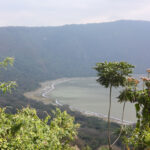
Walking safaris in Tanzania offer a unique and intimate way to experience the country’s diverse wildlife and stunning landscapes. Unlike traditional game drives, walking safaris allow you to explore the wilderness on foot, providing a deeper connection to nature and a more immersive experience. Here’s a comprehensive guide to walking safaris in Tanzania:
Why Choose a Walking Safari?
- Close to Nature:
- Walking safaris bring you closer to the flora and fauna, allowing you to appreciate the smaller details of the ecosystem that are often missed on game drives.
- Unique Wildlife Encounters:
- Encounter animals at ground level, observe their tracks and signs, and learn about their behavior and habitats from expert guides.
- Educational Experience:
- Gain insights into the ecology, geology, and cultural aspects of the area from knowledgeable guides and trackers.
- Adventure and Thrill:
- Feel the excitement of being on foot in the wild, where every rustle and movement holds potential for discovery.
Best Locations for Walking Safaris in Tanzania
- Selous Game Reserve:
- One of the best places for walking safaris, Selous offers vast, unspoiled wilderness with a variety of habitats. Walk along the Rufiji River, through miombo woodlands, and across open plains.
- Ruaha National Park:
- Known for its rugged terrain and diverse wildlife, Ruaha provides excellent walking safari opportunities. Explore its baobab-studded landscapes and riverine forests on foot.
- Tarangire National Park:
- Famous for its large elephant herds and ancient baobabs, Tarangire offers walking safaris that reveal its rich birdlife, diverse flora, and impressive termite mounds.
- Ngorongoro Conservation Area:
- Walking safaris around the rim of the Ngorongoro Crater or in the Empakaai and Olmoti craters offer breathtaking views and encounters with unique highland species.
- Katavi National Park:
- One of Tanzania’s most remote parks, Katavi is ideal for adventurous walking safaris. Experience its untouched wilderness and abundant wildlife, including large hippo pods and buffalo herds.
What to Expect on a Walking Safari
- Small Groups:
- Walking safaris are typically conducted in small groups to minimize impact and enhance the experience.
- Expert Guides:
- Led by experienced and armed guides who ensure safety while sharing their deep knowledge of the area.
- Duration and Pace:
- Walks can range from a few hours to multi-day expeditions, with a moderate pace suitable for most fitness levels.
- Wildlife Encounters:
- While large predators are often seen from a distance for safety reasons, expect close encounters with herbivores, birds, insects, and plant life.
- Educational Focus:
- Learn about animal tracks, medicinal uses of plants, local folklore, and the ecology of the area.
Accommodation Options
- Mobile Camps:
- Set up specifically for walking safaris, these camps move with you, providing a true wilderness experience with basic but comfortable amenities.
- Luxury Tented Camps:
- Combine walking safaris with stays at high-end camps like Nomad Tanzania’s Serengeti Safari Camp or Chada Katavi, which offer comfort and exceptional service.
- Lodges:
- Some lodges, like Beho Beho in Selous and Jongomero in Ruaha, offer walking safari experiences along with other safari activities.
Tips for a Successful Walking Safari
- Wear Appropriate Clothing:
- Light, breathable clothing in neutral colors, comfortable walking shoes, a wide-brimmed hat, and sunglasses are essential.
- Pack Light:
- Carry a small backpack with water, snacks, sunscreen, insect repellent, and a camera.
- Follow Guide Instructions:
- Always adhere to your guide’s advice and stay close to the group to ensure safety.
- Stay Quiet and Observant:
- Silence is key to spotting wildlife, so move quietly and keep your senses alert.
- Be Prepared for Weather Changes:
- Weather can change quickly, so bring a lightweight rain jacket and dress in layers.
Conclusion
A walking safari in Tanzania offers a unique and enriching way to experience the country’s incredible wildlife and landscapes. Whether exploring the vast plains of Selous, the rugged beauty of Ruaha, or the baobab-studded terrain of Tarangire, walking safaris provide unforgettable adventures and deep connections to the natural world. Perfect for nature enthusiasts, adventurers, and those seeking a more intimate safari experience, Tanzania’s walking safaris are sure to leave lasting memories.





